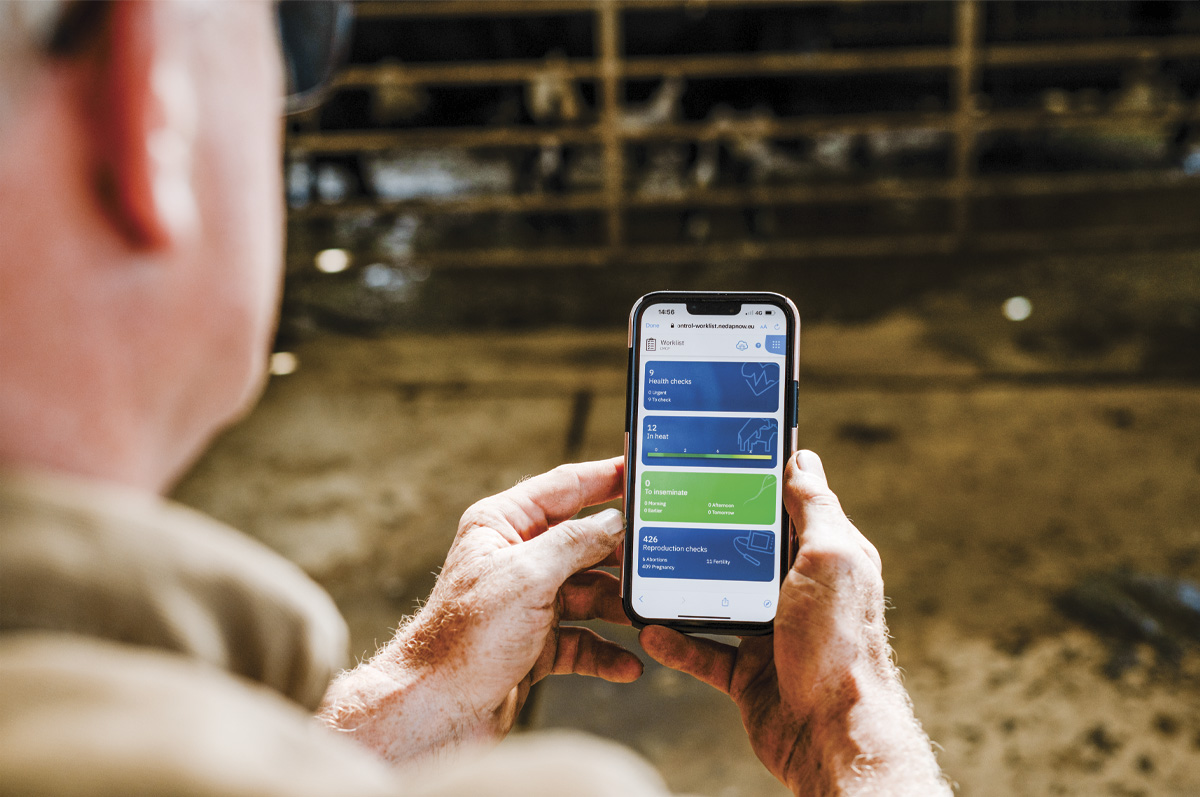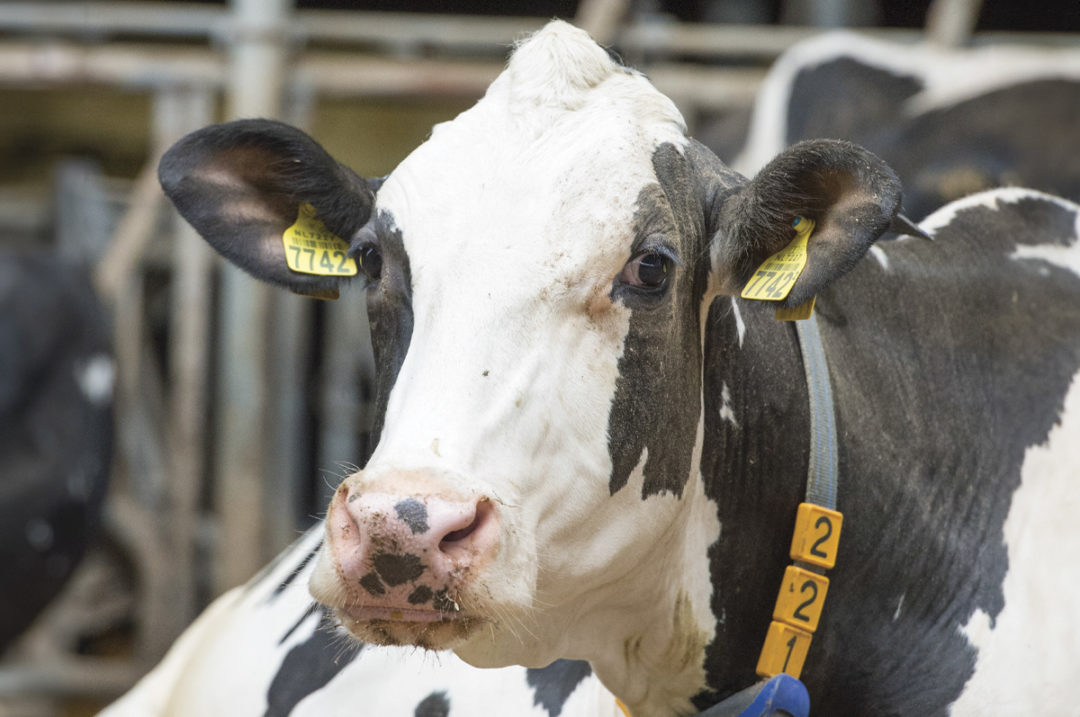Cattle may have been domesticated for centuries now, but they remain prey animals and work to keep their secrets. For instance, even if a cow does not feel well, she will try to express the same behavior as her herdmates, so she does not appear as the weak one and become more attractive to predators.
Those masking skills were beneficial thousands of years ago, but they can create herd management challenges today.
Thankfully, technology and actionable data are available to help dairy farmers uncover cow secrets and make better decisions to improve herd health, productivity and farm profitability.
ID is the key
The key to unlocking the puzzles cows often pose begins with accurate animal identification. Farmers need to know which cow is which, where she is located in the barn and what she does 24-7.
Radio frequency identification (RFID) has been used on-farm for 45 years to identify individual animals throughout the farm.
Once cows are identified, dairies can incorporate an entire suite of tools that use sensors to create data points. This information informs management activities and monitors cows for deviations from normal patterns before they can be noted visually.
Since the sensors are always on, it is much easier to track cow resting time, eating time, rumination and other activities, even when people are not present to witness changes.
For example, additional cow behavior decoding is possible by adding sensor technology to RFID, enabling dairies to learn more about daily, or even hourly, cow behavior. Further opportunities are available when RFID technology is paired with milking parlors and robots, then linked to milk production and other devices such as sort gates. Sensors also pick up estrous activity, aid in reproductive decisions and help fine-tune reproductive protocols.

Once cows are identified by RFID, dairies can incorporate an entire suite of tools that use sensors to create data points. Photo courtesy of Nedap.
See the unseen
What do sensors pick up that people cannot see?
When it comes to heat detection, data from sensors indicate more accurately than people:
- Estrous intensity
- Estrous duration
- Optimal insemination time
- Effect of estrous expression (intensity and duration) on pregnancy rate
Additionally, these insights help farmers more quickly identify cows returning to estrus before pregnancy checks. This information allows dairies to return a cow to the breeding protocol faster than waiting for a pregnancy diagnosis.
For health events, data shines in unmasking cow behavior before physical signs appear. For example, you can use data to answer questions like:
- Is a cow really eating at the feedbunk or is she just following her group?
- How long has a cow been standing in one spot?
- When was the last time a cow was up and moving around?
Data can also help you find cow health challenges:
- Fresh cows: Data may point out cows with transition challenges before the events physically appear, allowing for preventative treatment and care.
- Mid-lactation: Find deviating behavior even though all health indicators had been normal until 150 days in milk. The cow appears fine but is not. Alerts enable farms to intervene and begin appropriate health protocols.
The sensors are most effective when farms combine data points for a broader picture. For example, combining inactivity and eating or inactivity and rumination. When eating and activity data are out of balance, based on each cow’s behavioral baseline, the deviation sets off a trigger to check on the cow, allowing for earlier detection of issues.
Data and reproductive performance ties
Most dairies do not look at heat detection data until after the voluntary waiting period (VWP) ends, but research recently published by the Journal of Dairy Science indicates this may be a missed opportunity. This research shows it is important to look at heat detection within the VWP to understand reproductive performance – especially for multiparous cows.
Results from the study provide further evidence that early postpartum estrous expression influences fertility in lactating dairy cows.
- Cows with no estrous expression detected by an automated activity monitoring system from day 7 until day 60 postpartum had inferior reproductive performance compared with cows that displayed estrous activity.
- Cows with stillbirth, retained placenta, metritis and subclinical ketosis were more likely to be anestrous within the VWP.
These findings strongly suggest understanding a cow’s cyclicity before breeding can help improve reproductive performance. Also, the research indicates dairies should be monitoring cows’ estrous cycles much earlier than previously thought, paying more attention to early postpartum estrous expression.
Secrets revealed
Connecting the data dots throughout the dairy value chain – from inputs to outputs – is key to closing knowledge gaps and revealing what the cows are silently telling us. Including expertise from key farm advisers like veterinarians and nutritionists also allows dairies to enhance more data-driven strategies over the long term.
Every cow is unique; by knowing her activity, behavior and history, dairies can understand individual animal needs and manage this variation better to improve overall herd performance. When it is known how cows are behaving, dairies can manage them by exception.
Additionally, sensor data needs to be accurate and relevant, along with reliable interpretation and context so dairies can obtain the most value. Considerations include housing type, milking system, seasonality, cow parity and lactation phase.
Plus, dairies must manage the technology to their goals so it reveals cow secrets that will save input costs, save time and increase herd and farm productivity as well as support the well-being of animals and people.
Even with 45 years of identifying and tracking animals, cow monitoring is more relevant than ever. The cows are talking to us, but are we listening?
References omitted but are available upon request by sending an email to the editor.






